[Note: Colors updated 7 Dec 2021 to be more legible :)]
Note: Doesn't directly answer the question above, since I'm bad at sed. But this improves readability, and compared to the others which require ipython/are slow, this is what I actually use regularly.
Current (lightweight solution -- as in, don't need to install anything, and don't have to edit existing python files one-by-one)
As per, https://stackoverflow.com/a/20910449, let's use sed and ANSI color codes.
Add to ~/.bashrc
norm="$(printf '\033[0m')" #returns to "normal"
bold="$(printf '\033[0;1m')" #set bold
red="$(printf '\033[0;31m')" #set red
boldyellowonblue="$(printf '\033[0;1;33;44m')"
boldyellow="$(printf '\033[0;1;33m')"
boldred="$(printf '\033[0;1;31m')" #set bold, and set red.
copython() {
python $@ 2>&1 | sed -e "s/Traceback/${boldyellowonblue}&${norm}/g" \
-e "s/File \".*\.py\".*$/${boldyellow}&${norm}/g" \
-e "s/\, line [[:digit:]]\+/${boldred}&${norm}/g"
}
Reload
$ source ~/.bashrc
What it looks like originally
$ python main.py

Pretty annoying to read. Now compare with
$ copython main.py
[
It's a bit garish but I'm happy with it, and I don't understand ANSI codes so these are the colors I'm stuck with :)
Colors updated to be more pleasing [7 Dec 2021]
# ---
# Color python error output
# ---
norm="$(printf '\033[0m')" #returns to "normal"
bold="$(printf '\033[0;1m')" #set bold
red="$(printf '\033[0;31m')" #set red
boldyellowonblue="$(printf '\033[0;1;33;44m')" #set blue bkgrd, bold yellow text
boldyellow="$(printf '\033[0;1;33m')" #set gold yellow text
boldred="$(printf '\033[0;1;31m')" #set bold red
# Color error messages from python, use as "copython test.py" instead of "python test.py"
# WARNING: Takes time to run (small but noticeable)
# May also interfer with print to console (for long running programs)
copython() {
python $@ 2>&1 | sed -e "s/Traceback/${boldyellowonblue}&${norm}/g" \
-e "s/File \".*\.py\".*$/${bold}&${norm}/g" \
-re "s/\, line [0-9]\+/${boldred}&${norm}/g" \
-re "s/ {4}(.*)$/${boldyellow}&${norm}/g" \
-e "s/.*Error:.*$/${boldred}&${norm}/g" \
}

Note on ANSI Color Code
Note that \033[ marks the beginning of a code, which helped me understand a bit better what is going on.
0m # normal
0;1m # bold
0;1;33;44m # bold yellow on blue
0;1;33m # bold yellow
0;1;31m # bold red
So I guess the first 1 indicates bold, then the second 33 indicates foreground color, and the third 44 indicates background color. Something like that.
Obsolete
I was also looking for something where I didn't need to modify every single python file I want to print error messages from. How to use Tobin's answer wasn't immediately clear to me.
For those wondering how to use, need to install vimcat, then add above function to bashrc (or other file that you source), and run $ colorized test.py (instead of $ python test.py)
For instance
~$ wget https://raw.githubusercontent.com/vim-scripts/vimcat/master/vimcat vimcat
~$ mv vimcat /usr/share/bin # or /home/bin or wherever you want
~$ echo $PATH # make sure vimcat's directory is in your PATH variable, if not add to `~/.bashrc`
home/rui/.local/bin:/usr/local/sbin:/usr/share/bin
~$ source ~/.bashrc # reload PATH if had to add vimcat location
~$ vimcat somefile.sh # test that vimcat can be called
~$ colorized calibrate.py
What before and after looks like for me:

And verifying that vimcat works / has been sourced properly:

Note that this does take noticeably more time to run!
$ time colorized calibrate.py
real 0m0.484s
user 0m0.392s
sys 0m0.085s
rui@chaiX1YG2:~$ $ time python calibrate.py
real 0m0.343s
user 0m0.271s
sys 0m0.072s





